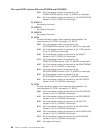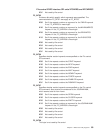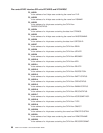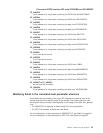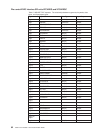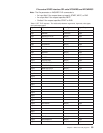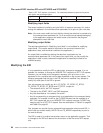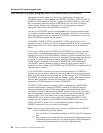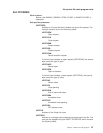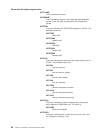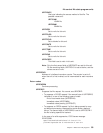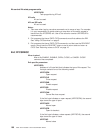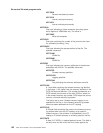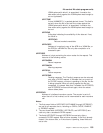
File control file state program exits XFCSREQ and XFCSREQC
Two user exits are provided in the file control state program. You can use
XFCSREQ, which is invoked before a file ENABLE, DISABLE, OPEN, CLOSE, or
CANCEL CLOSE request is acted on, to gather information about the state of the
file—for example, which file requests (SERVREQs) are valid, which journaling
options are set. Based on this information, you can suppress the request, if
appropriate. (See return code UERCBYP on page 99.)
You can use XFCSREQC, which is invoked after the file request has been acted
on, to gather information about the data set associated with the file—for example,
which recovery options are set. Note that XFCSREQC is invoked even if you have
used XFCSREQ to suppress the file request.
For ENABLE, DISABLE, OPEN, and CANCEL CLOSE requests, each exit is
invoked only once. However, for CLOSE requests, because a file can be quiesced
before actual closure, the exits might be invoked more than once, as described
below.
For a single CLOSE request, XFCSREQ and XFCSREQC are invoked more than
once if closure is attempted while the file is being accessed by other tasks. For
example, the result of a CLOSE NOWAIT command in these circumstances is that
XFCSREQ is invoked before the closure is attempted. Because there are still users
of the file, the closure is delayed. However, because it specified NOWAIT, the
CLOSE request completes, and invokes XFCSREQC with UEPFSRSP set to
‘UEFSPEND’, meaning closure is pending. When all activity against the file is
complete, the file is closed, and XFCSREQ and XFCSREQC are invoked under the
task that actually closed it.
For a CLOSE WAIT command, the exits are invoked as follows. XFCSREQ is
invoked, the task requests a closure of the file and waits for the closure to happen.
When all activity against the file is complete, the file is closed, and XFCSREQ and
XFCSREQC are invoked under the task that closed it. Finally, because the closure
has now been completed, the task that issued the CLOSE WAIT is resumed,
completes its CLOSE request, and invokes XFCSREQC.
A CANCEL CLOSE request is issued by CICS in response to an UNQUIESCE
command that cancels a pending QUIESCE command. A QUIESCE data set
command immediately sets all files opened against the specified data set as
unenabled, to prevent new tasks being allowed access to the data set. The close
part of the operation, however, waits until the last user task finishes before a file is
actually closed. (This is the same as any close operation against a file.) An
UNQUIESCE issued while the close is still waiting causes a CANCEL CLOSE
request and the invocation of the XFCSREQ and XFCSREQC exits. Note that a
CANCEL CLOSE is issued only for close requests that were initiated by a
QUIESCE command, not for any other close requests.
Note: There are two occasions when the user exits XFCSREQ and XFCSREQC
are not invoked during a close request:
1. On a controlled, non-immediate shutdown of CICS, when CICS closes all
files.
2. After loading a user maintained data table. When the data table load has
completed the source data set is no longer required. CICS subsequently
closes and de-allocates the file, leaving the data table open.
file control file state program exits
96
CICS TS for OS/390: CICS Customization Guide



